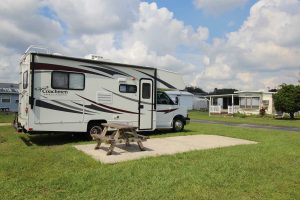Basic intro RVing

Summary: Hitting the open road in an RV isn’t so hard once you understand how the basic systems of water, electricity and waste work.
For the complete beginner, using a camper and being on the open road seems like a daunting task. The first step when starting out is to understand the basics Systems of an RV:
Water
All campers have two methods of supplying water. The first source is the tank that is on board. The tank capacity on the RV is relative to the size of the vehicle, going from 30 to 90 gallons depending on the model. The other option for water is known as “city water” and is water from an external source. For most, this is water from an RV park or camping ground.
Electricity
Just like the water supply, electric power comes from either “shore power” or batteries in the camper. The difference between power from a campground and battery power is the voltage. With “shore power,” the camper functions like a house where you get 120v and can plug in any appliance. When on battery power, you have 12v and can use the heaters, water, and other basic systems.
Waste
All the water you use on the camper becomes your waste water. Sink and shower water goes into a gray water tank, and everything from the toilets go to a black water tank. There is a limit to the capacity of the tanks, so it depends on how close you are to a camp site. Most RV parks and campsites have sewer hoses to drain your tanks.
Written by The Foam Factory. Increase the comfort of trips on your camper by replacing your RV bedding from The Foam Factory, a specialized store in various foam products.

Leave a Reply